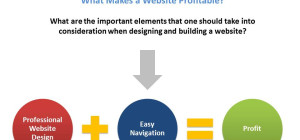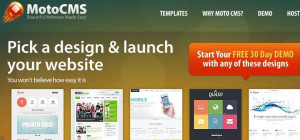The recent surges in digital dominance have made it necessary for a business to pay attention to building an online presence in the world of the web and social media. Nowadays, the process doesn’t limit to creating a corporate website, rather it involves managing social media campaigns throughout all the social networks and functional apps for better user engagement. To create an uninterrupted virtual presence, business owners have to work with a group of professionals called web designers, developers, and designers. All of them work together to develop a right face of business in the digital world. Businesses need these professionals throughout their journey from designing a company logo and launching a suitable website to create marketing materials for print, electronic and digital media.

Graphic designers are the professionals who are capable of providing logos, artwork and sensible page design that best matches with the business and personality and successfully convey the right message to prospective customers and target audiences.
Whether you are hiring dedicated designers exclusively for your company or you are outsourcing work to a design agency, you need to manage all design tasks carefully to assure not only the productivity but to also enhance the process efficiency.
Here I am sharing seven tips to give business owners a complete insight of working sensibly with graphic designer smoothly and comfortably to obtain maximum output.
- Write a detail design brief

A well-written design brief documents your requirements, often with visual examples. It facilitates you to deliver the project efficiently. Otherwise, a vague brief will certainly lead you to something you don’t like. Asking your designers to make 360° changes in design will frustrate not only their minds but also increases the cost and time. To avoid this situation, do some research on the internet for inspiration and note down all the things you like to see in the design. Include visuals to deliver requirements in a best possible manner.
2. Set a realistic time frame
The best way to stay realistic while setting up the timeline for. Setting up the timeline with mutual understanding doesn’t mean to wait silently, rather it involves deciding exact deadlines to receive things like a first draft, final design and print ready version. However, you never lose practicality in the case of revisions, as revisions may take several hours depending upon the kind of amendment you have demanded. It’s difficult for a layman to decide the time frame to complete these tasks. The final design piece requires a lot of skills and knowledge.
3. Desire perfection in final product

Expecting to receive a perfect design in the first attempt is the biggest mistake most of the upcoming entrepreneurs are tending to make. You never find a designer promising to deliver 100% accurate design in a single attempt. Behave mindfully and receive and observe the first draft carefully to demand sensible edits and re-enhancements. A professional designer always appreciates and considers criticism constructive while making revisions.
4. Understand the main components of design
Color, fonts, images, layout and overall aesthetics are the five main components of any professionally created illustration. Being a client it’s your responsibility to consider all these components separately to give your designer a clear idea about what you do and don’t like in their design work. A hazy statement telling them I don’t like this will not work here. You have to be very precise about the specific component you don’t like.
5. Provide a descriptive feedback

Perhaps you are not too much satisfied with the first draft from your designer. Although you have delivered a good design brief and he has included everything accordingly, still you are feeling it is missing the wow factor. Don’t feel disheartened and give descriptive feedback with relevant examples. Avoid general feedbacks and give them freedom to utilize their creative ideas. It might be possible with your limited and no exposure to graphic designing you fail to see the wow factor.
6. Ask questions fearlessly
Don’t be shy asking questions with your graphic designer. Being realistic and flexible doesn’t mean to feel afraid of raising questions. After all, you are paying them a handsome money to develop a company face for online portals, you have the right to ask them to explain any confusing image, color or font choice in the design. If a design doesn’t make sense to you, it may confuse your audience as well.
7.Communicate with patience
Despite delivering a brief design plan, sometimes things don’t seem to go in the right direction. Don’t feel frustrated and overwhelmed. Keep on discussing with your designer. Take a break and try to view the design from the perspective of your target audience. Sometimes a design is good to go with but you are not satisfied. To overcome this confusion, trust on the designer and welcome his suggestions for the betterment your brand.
Endnote: Designing websites and logos is a subjective process and there is no rigid way to obtain success. All you need is to create a good working relationship with your graphic designers with constant communication.







